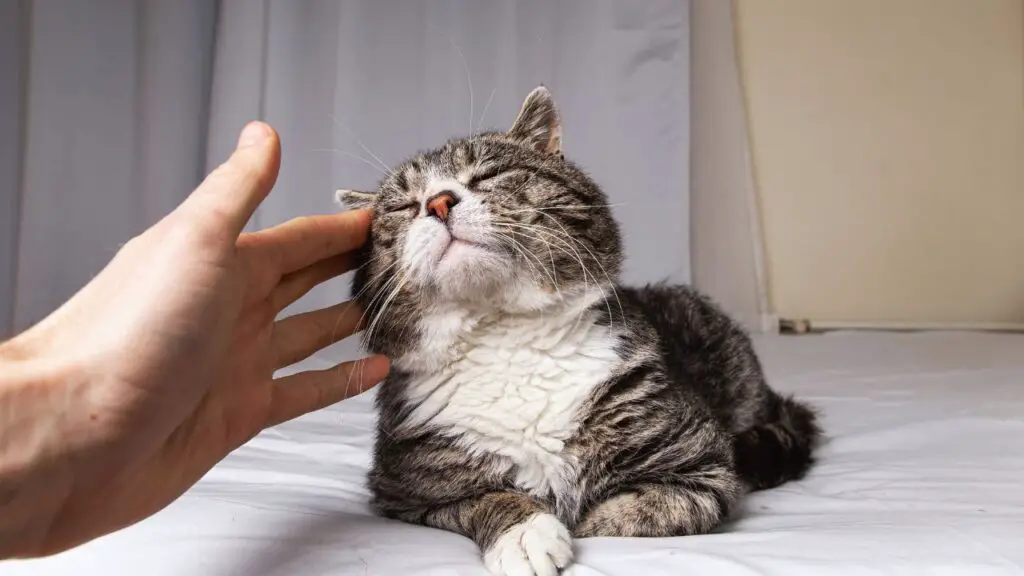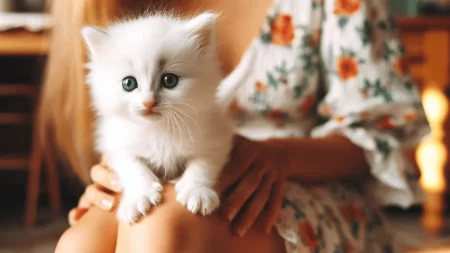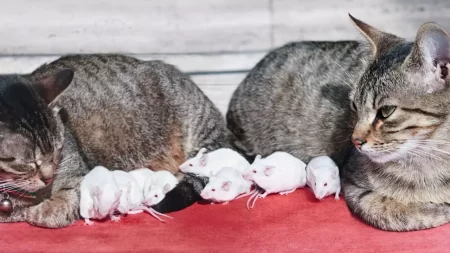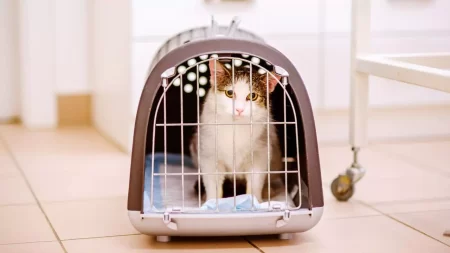Cats don’t seem to get tired of purring and they don’t control it, either. The signal that the cat’s body gets that tells it to purr comes from the central nervous system and it runs on ‘automatic’ until it is sent a signal to stop.
The actual purring is produced when your cat breathes and its glottis (by your cat’s vocal cords) dilates rapidly.
Cats may purr for different reasons, not just when they are happy or content. They may also purr when they are stressed, injured, or dying, as a way of self-repair or soothing.
Purring is a sign of well-being for the house cat, but it can also indicate other emotions or needs. If your cat purrs a lot or a little, may depend on their personality, environment, and health.
Are there any negative effects of purring constantly?
Purring is a natural and almost passive part of breathing for cats, and it does not seem to require much energy or effort.
Purring may also have some positive effects on cats, such as healing their bones and tissues, reducing stress, and strengthening their bond with humans and other animals.
Although cats are known for purring when they’re happy or content, it’s important to recognize that constant purring may be a signal of pain, injury, or even approaching death.
Some cats use purring to calm themselves down or indicate their need for assistance.
If you notice your cat purring more frequently or if their purr has changed in tone or has a higher pitch, it’s crucial to observe their behavior and health closely and consider seeking medical attention.
Purring is not always an indication of happiness, but can also suggest discomfort or distress.
Can cats stop themselves from purring when they’re tired?
Cats have some control over their purring. They can choose to make it louder when it suits them.
The sound is produced by the contraction of certain muscles.
However, cats are unable to completely halt their purring because it is an automatic reaction prompted by a neural oscillator.
Purring plays an important role in the lives of kittens, facilitating bonding with their mother and littermates. It also serves as a means of communication for adult cats with other creatures, including humans.
Are there certain times of day when cats purr more often?
There is not much research on whether cats purr more often at certain times of the day.
However, some possible factors that could influence the frequency of purring are:
- Hunger: Cats may purr more often when they are hungry or want food, as a way of manipulating their owners to feed them. This may happen more often in the morning or before meal times.
- Contentment: Cats may purr more often when they are content and happy, and getting petted makes most cats happy. This may happen more often when they are relaxed and comfortable with their owners or other animals.
- Sleepiness: Cats may purr more often when they are falling asleep or waking up, as a way of expressing their satisfaction or comfort. This may happen more often at night or during nap times.
- Stress: Cats may purr more often when they are stressed or anxious, as a way of soothing themselves or signaling their need for help. This may happen more often in unfamiliar or threatening situations, such as vet visits or loud noises.
Can cats purr so much that they lose their voice?
It is unlikely that cats can lose their voice from purring too much, as purring is a natural and almost passive part of their breathing.
Purring does not require much energy or effort, and it does not strain the vocal cords.
What other forms of communication do cats use besides purring?
Cats use a variety of communication methods besides purring, such as:
- Meowing
- Chirping and chattering
- Calling
- Growling, hissing, and snarling
- Body language
- Scent and pheromones
- Tactile communication
Do different breeds of cats purr differently?
Yes, different breeds of cats purr differently, depending on the size and genetics of the breed.
Purring is a unique vocalization that cats produce by vibrating their laryngeal and diaphragmatic muscles when they breathe in and out.
The frequency and volume of the purr can vary depending on the thickness and length of the vocal cords.
Larger breeds, such as Maine Coons, Ragdolls, or Norwegian Forest Cats, have larger vocal cords, which result in a lower frequency purr.
Their purrs may sound more like a rumble or a growl than a typical purr.
Smaller breeds, such as Siamese, Abyssinian, or Cornish Rex, have smaller vocal cords, which result in a higher frequency purr.
Their purrs may sound more like a trill or a chirp than a typical purr.







